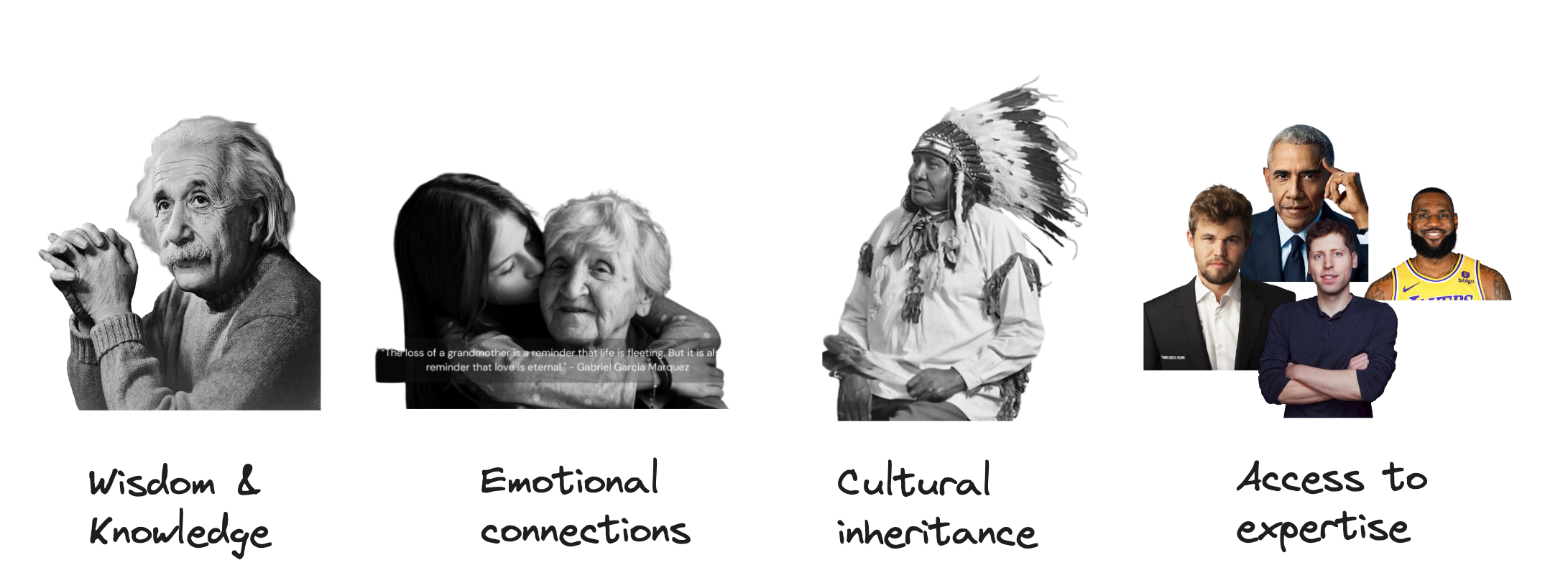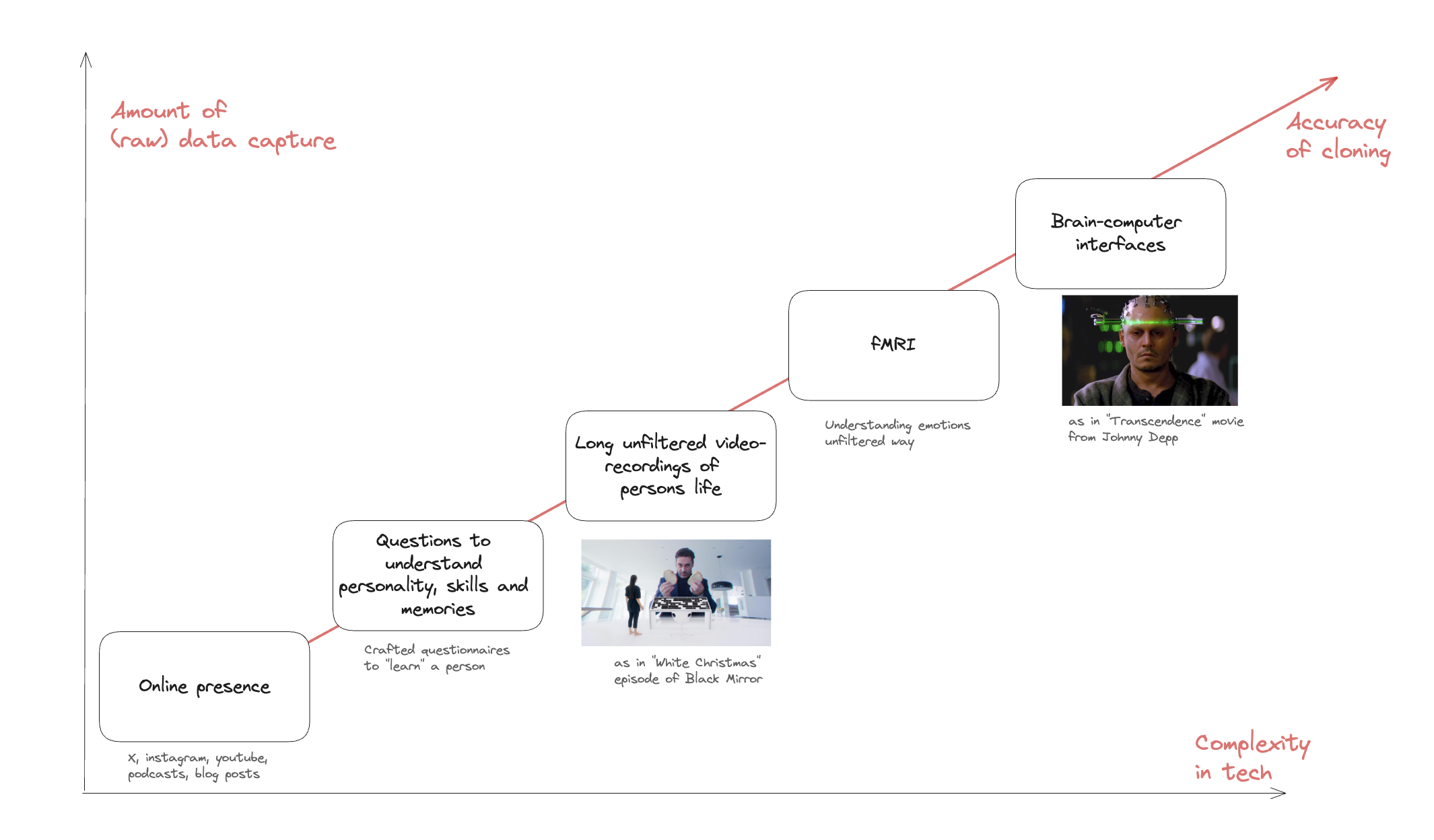Exploring the Future: Cloning Minds
Imagine a world where we can clone minds. Sounds like something straight out of a sci-fi movie, right? Think “Transcendence” or that “Black Mirror” episode, “White Christmas”. But with the pace of tech advancements, particularly in AI, this once far-fetched idea is getting some serious attention.
Cloning Minds: What Does It Even Mean?
In simple terms, cloning a mind is about replicating someone’s consciousness, personality, memories, and smarts in a digital space. It’s not just about copying what we do but getting into the nitty-gritty of our thoughts, feelings, and consciousness. The big question is, can we really do it? Can we create a digital twin that’s not just a shallow copy but a deep, nuanced one?
Why Clone Minds? The Real-World Applications
Let’s dive into the “why” of mind cloning. What’s in it for us?

-
Eternal Knowledge: Imagine having the intellect and wisdom of the greatest minds at our fingertips, forever. This isn’t just about remembering them; it’s about keeping their thoughts and ideas alive and kicking in the digital world.
-
Emotional Bonds Beyond Time: Losing someone is hard. But what if you could still talk to them, hear their voice, get their advice? Cloning minds could offer a way to maintain a connection with our loved ones, even after they’re gone.
-
Preserving Cultural Heritage: How about interacting with historical figures? Imagine learning from them directly, hearing their stories firsthand. It’s about keeping our history alive in a way that books and videos can’t match.
-
Access to Unreachable Expertise: Ever wished you could get advice from top experts or hard-to-reach celebrities? Digital clones could democratize access to their knowledge and insights, breaking down barriers in learning and decision-making.
How Are We Planning to Clone Minds? The Detailed Steps
The journey to mind cloning isn’t just a single leap; it’s a series of intricate steps, each fascinating in its own right.

-
Creating a Digital Foundation: It all starts with our digital footprint. By collecting data from our online interactions, we lay the groundwork for a basic digital twin. This step is about capturing the external aspects of a person - what they say, do, and show online.
-
Deep Personal Diving: Next, we dive deeper. This involves engaging people in detailed conversations, asking targeted questions to unearth their traits, memories, and skills. It’s like an in-depth interview, but the goal is to understand the essence of their consciousness.
-
Recording Life Experiences: Remember “Black Mirror’s” White Christmas? We’re talking about something similar. This step involves recording and replicating life experiences. It’s about adding depth and context to the digital clone, making it more than just a surface-level copy.
-
Decoding Preferences with Technology: Enter fMRI machines. These could be used to understand and replicate a person’s preferences and choices, adding another layer of complexity to the digital twin.
-
Brain-Computer Interfaces: The final frontier could be direct brain-computer interfaces. This isn’t just about understanding thoughts; it’s about tapping into the unspoken, untyped, unshared parts of consciousness. It’s the most ambitious and challenging step, but it represents the pinnacle of mind cloning technology.
The Ethical Maze
While the technical steps are clear, the ethical landscape is anything but. The main concern remains: can we fully and faithfully capture a person’s essence? There’s a risk of creating only a partial, perhaps even distorted, version of a person’s consciousness. This venture isn’t just a technological breakthrough; it’s an exploration into the deepest aspects of human identity.
Final Thoughts
Mind cloning is a multi-step journey, each more challenging and exciting than the last. We’re not just pushing the boundaries of technology; we’re probing the very nature of human consciousness. It’s a path fraught with ethical dilemmas, but also brimming with possibilities for groundbreaking innovation.